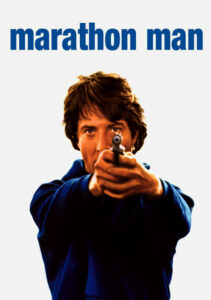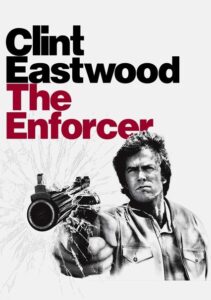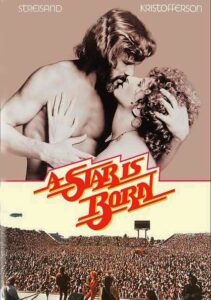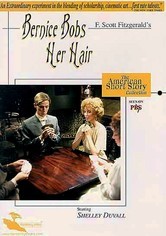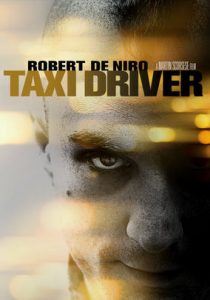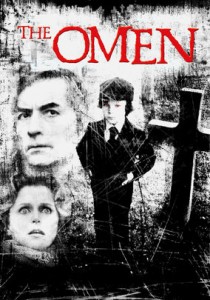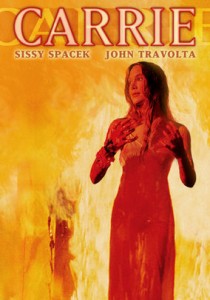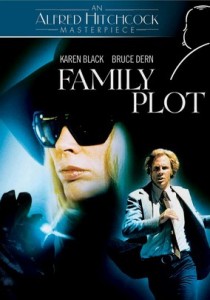Marathon Man-1976
Director John Schlesinger
Starring Dustin Hoffman, Laurence Olivier, Roy Scheider
Scott’s Review #1,359
Reviewed April 29, 2023
Grade: A-
Writer, William Goldman, was involved in two politically charged, taut thrillers released in 1976 that can easily be watched back to back. Fast-paced and rapidly edited, thrilling action-packed offerings are on the menu.
The Academy Award-winning All the Presidents Men (1976) and Marathon Man (1976) are highly recommended since both are in the same vein. They are part of why I love 1970s cinema so much freedom and rich character development combined with a sole vision are admirable traits.
John Schlesinger, famous for Midnight Cowboy (1969) and other films, directs.
Both films are written by Goldman and each stars actor Dustin Hoffman so the similarities are endless. And yet, each has its own identity.
In Marathon Man, Thomas “Babe” Levy (Hoffman) is a Columbia graduate student and long-distance runner, residing in New York City. His older brother, Doc (Roy Scheider), is a government agent chasing down a Nazi war criminal named Szell (Laurence Olivier).
Babe does not know Doc’s career until a tragic event finds him involved in a plot of stolen gems and sadistic madmen. Even his girlfriend, Elsa (Marthe Keller), becomes a suspect as everything Babe believes to be true is suddenly turned upside down.
At over two hours there is not a slow moment in the film.
We meet Babe as he runs throughout New York City so that the audience learns his obsession with running could correlate to his need to escape from something.
This proves to be true when we learn the brother’s father committed suicide after being investigated during the Joseph McCarthy era when civilians were suspected and accused of being communists.
So, the backstory made me sympathize with Babe and Doc and fleshed them as characters. Hoffman and Scheider are superb and show the different nuances between the personalities of the brothers. Doc is sophisticated and Babe is common, though highly intelligent.
The musical score, created by Michael Small must be mentioned. Oftentimes in film, the score serves as more or less ‘background music’ and can go unnoticed. This is not the case in Marathon Man and several times I noticed the music-enhancing sequences, especially when peril was involved.
I was pleased when I learned that the iconic Laurence Olivier plays the villain, Szell, in the film. He is believable as a vicious German Nazi who specializes in a unique brand of dental work. First blonde and then bald, the physical nature of the role is showcased. He also calmly performs torturous tactics using dental tools.
Marathon Man is made up of a series of scenes that will either enthrall, make the audience squirm, or in some cases both.
Speaking of dental work, any viewer who has a phobia or dislike of going to the dentist may want to fast forward past the sequence when Babe is forced to endure some stylized poking and prodding. Szell and his henchmen are convinced that Babe knows more than he is letting on and are determined to make him reveal all.
Early on, a terrifying scene centering on road rage in Manhattan is as good as it gets and reveals the gist of the plot. Nazis, anti-semitism, and a fiery gasoline truck encompass a speedy and argumentive car chase scene.
The sequence is heart-racing, nail-biting, and revealing.
Others flesh out the film like a quiet lunch at a lovely French restaurant. Doc takes Babe and Elsa out where they dine on lavish courses of creamy, sophisticated cuisine and wine. The richness of the food and culture enhances the earlier scenes set in Paris.
The final thirty minutes of Marathon Man are the best part. A series of shootouts in the suburban rural farmland and foot chases in downtown Manhattan culminate in a showdown between Babe and Szell near a water tank in Central Park.
A strong appeal for viewers is experiencing scene after scene in New York City as many exteriors were shot there.
The plot of Marathon Man (1976) is sometimes too complicated and all events do not add up satisfyingly. The who’s who and realism is a tough sell but it hardly matters. The film entertains and is a high-energy thrill ride and that is more than enough for me.
Oscar Nominations: Best Supporting Actor-Laurence Olivier
